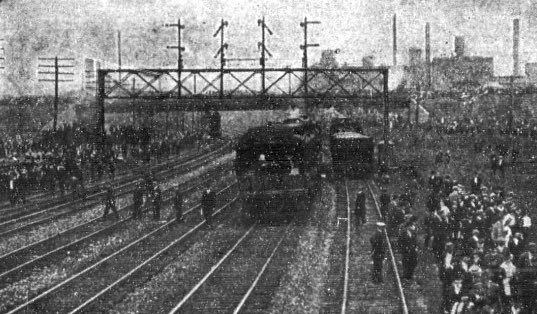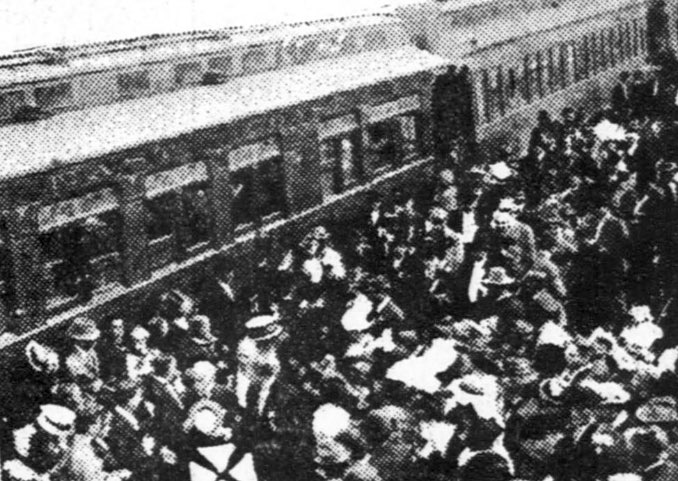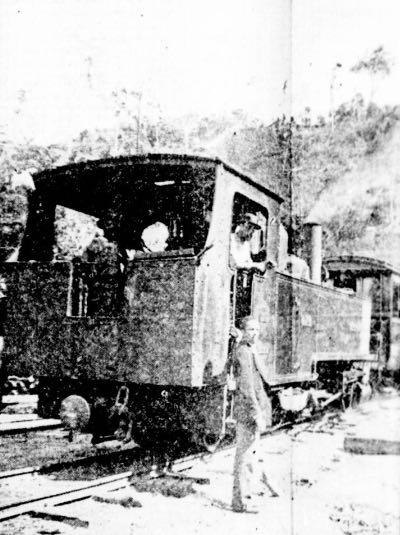
There is no use saying that trains are dangerous. After all, we still hear of accidental and intentional deaths involving trains. However, train accidents were far more common in the past than they are today, and those early deaths were far more gruesome than what we read about in the newspapers.

A Way to End It
A severed head and body was discovered on a railway line near Auburn, Australia in 1928. The police investigated the scene and came to the conclusion that the man had intentionally laid his neck over the rail to end his life. Unfortunately, there are many newspaper accounts of this form of suicide in the early 1900s. [1]
Horribly Mangled
As the train was leaving Peach Springs, Arizona in 1904, the conductor worked his way to the back of the train. There, in one of the cars, the conductor came face to face with a tramp. No one knows what transpired between the conductor and the tramp. All we know is that the confrontation became violent and the tramp shot the conductor. The conductor’s body fell from the train car and was pulled under the wheels.

When the train reached Yampai, the conductor could not be found. The train crew contacted the Peach Springs operator and the search was on.
Some distance down the track, the searchers found the body of the conductor:
“The head was severed, as was the legs from the body and the trunk was torn into an unrecognizable mass. The bullet had entered the forehead and had ranged backward and downward, passing out of the base of the brain.” [2]
No One Heard the Gunshot
No one can deny that trains are loud. In fact, they are loud enough to muffle the sound of a gun, as was the case back in 1950 when a male passenger was shot through the head while in his compartment. No one heard the gunshot, but then the murderer decided to dump the victim’s body out of the carriage window.
A man sitting in the back of the train saw the victim’s body fall to the side of the tracks and pulled the communication cord. The train stopped and the body was quickly located. The police were called to the scene and the grueling investigation began. [3]

Could Not Be Identified
In 1905, the remains of a man were discovered on the railroad tracks in Missouri. The coroner was brought to the scene. He held an immediate inquest, but “[t]he corpse was so mutilated, being cut to pieces and crushed almost to a pulp and scattered along the railroad, that it could not be recognized and there was nothing on the person to lead to identification.”
Because the body could not be identified and there were no witnesses, there was no attempt to place a blame for the death. The fragments of the body’s remains were gathered, placed in a coffin, and taken for burial. [4]
Broken Air Brake Pipe
One night back in 1924, a train near Ferntree Gully, Australia had to make an emergency stop. The air brake pipe had broken and on investigating the cause, the mangled body of a decapitated man was found underneath the train. The police took the body to the local police station and the next day the head was discovered. It was unknown if the death was an accident, a murder, or a suicide. [5]

Dead Body Sounded Alarm
While a London train was traveling at full speed back in 1912, the driver felt a sudden strain on the communication chain. He brought the train to a stop and went to investigate. That’s when the body of a signalman was discovered. He had “fallen on top of the train as it was running under a signal arch, and the weight of his body on the communication chain had sounded the alarm in the cab of the engine.” The signalman’s body was, of course, horribly mutilated. [6]
Corpse on the Engine
It was reported in a Melbourne, Australia newspaper in 1917 that when a local train made its stop, the dead body of a man was found on front of the engine. Apparently, the train struck the man, along with his horse and cart. The cart went up in splinters, the horse was killed, and the man’s body stuck to the train’s engine for seventeen miles. [7]

